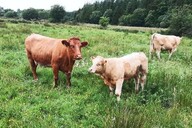The Department of Housing, Local Government and Heritage is seeking expressions of interest from advisers interested in undertaking paid roles working with farmers under the Water of Life project.
The initiative co-funded by the European Union was launched earlier this year and aims to ‘help reverse the deterioration of Ireland’s most pristine waters’.
The project will operate a results-based agri-environment scheme from 2025 to 2028 across five catchments. Farmers participating in the scheme will undertake initiatives to trial water quality solutions which will feed in to developing future EU policy.
Catchment areas
The areas outlined in correspondence released include the following;
Clare (and SE Galway) – Graney Sub-Catchment:Includes Lough Graney in east Clare and Lough Atorick in southeast Galway.
Catchment Map
Cork – Awbeg (Kilbrin) Sub-Catchment:Sits within the Kanturk-Mallow Municipal District of Cork.
Catchment Map
Cork – Shournagh Sub-Catchment:From the foothills of the Boggeragh mountains northwest of Cork City to Blarney.
Catchment Map
Galway (NE) / Roscommon (W) - Islands Sub-Catchment:The islands catchment straddles counties Galway and Roscommon and feeds into the larger River Suck. It includes Ballymoe and Williamstown in Galway as well as Ballinlough and Treen in Roscommon.
Catchment Map
Wicklow – Avonmore sub-catchmentRuns from the northeast of the Wicklow Mountains through to Annamoe and Laragh Villages.
Catchment Map
Project targets
The project objectives state that it will trial and validate the implementation of measures at the catchment scale across a number of pilot catchments with the view to:
Building technical understanding and capacity in relation to the design and implementation of measures across a variety of key land-uses to deliver effective solutions at a catchment-wide scale for the protection of high-status waters;Promoting community and landowner ownership of the actions proposed and ensuring local community involvement in developing the land-use management actions to be implemented;Making recommendations that will inform the development of future agri-environment and forestry policies and provide for the long-term sustainable management of high-status areas;Enhancing public appreciation of the ecology, ecosystems and natural capital value of high-status waters and their catchments;Developing and building synergies between measures implemented to address water quality considerations and related biodiversity objectives within the catchments of high-status waters, and:Monitoring and demonstrating the effectiveness of the measures implemented.
The Department of Housing, Local Government and Heritage is seeking expressions of interest from advisers interested in undertaking paid roles working with farmers under the Water of Life project.
The initiative co-funded by the European Union was launched earlier this year and aims to ‘help reverse the deterioration of Ireland’s most pristine waters’.
The project will operate a results-based agri-environment scheme from 2025 to 2028 across five catchments. Farmers participating in the scheme will undertake initiatives to trial water quality solutions which will feed in to developing future EU policy.
Catchment areas
The areas outlined in correspondence released include the following;
Clare (and SE Galway) – Graney Sub-Catchment:Includes Lough Graney in east Clare and Lough Atorick in southeast Galway.
Catchment Map
Cork – Awbeg (Kilbrin) Sub-Catchment:Sits within the Kanturk-Mallow Municipal District of Cork.
Catchment Map
Cork – Shournagh Sub-Catchment:From the foothills of the Boggeragh mountains northwest of Cork City to Blarney.
Catchment Map
Galway (NE) / Roscommon (W) - Islands Sub-Catchment:The islands catchment straddles counties Galway and Roscommon and feeds into the larger River Suck. It includes Ballymoe and Williamstown in Galway as well as Ballinlough and Treen in Roscommon.
Catchment Map
Wicklow – Avonmore sub-catchmentRuns from the northeast of the Wicklow Mountains through to Annamoe and Laragh Villages.
Catchment Map
Project targets
The project objectives state that it will trial and validate the implementation of measures at the catchment scale across a number of pilot catchments with the view to:
Building technical understanding and capacity in relation to the design and implementation of measures across a variety of key land-uses to deliver effective solutions at a catchment-wide scale for the protection of high-status waters;Promoting community and landowner ownership of the actions proposed and ensuring local community involvement in developing the land-use management actions to be implemented;Making recommendations that will inform the development of future agri-environment and forestry policies and provide for the long-term sustainable management of high-status areas;Enhancing public appreciation of the ecology, ecosystems and natural capital value of high-status waters and their catchments;Developing and building synergies between measures implemented to address water quality considerations and related biodiversity objectives within the catchments of high-status waters, and:Monitoring and demonstrating the effectiveness of the measures implemented. 





 This is a subscriber-only article
This is a subscriber-only article










SHARING OPTIONS: